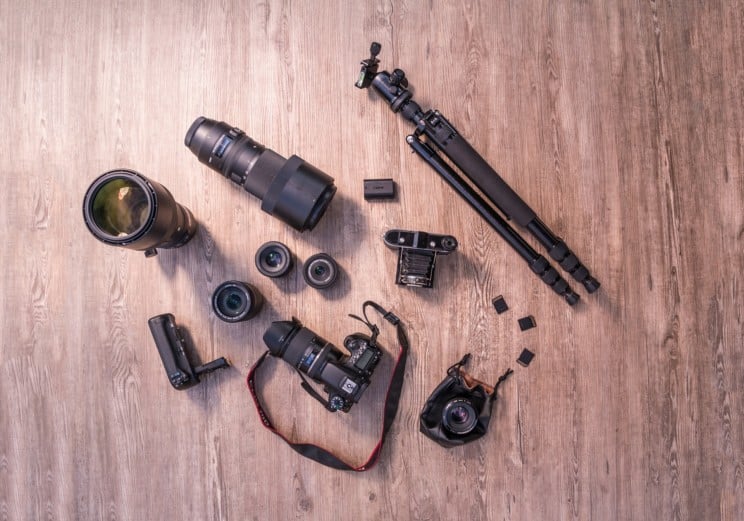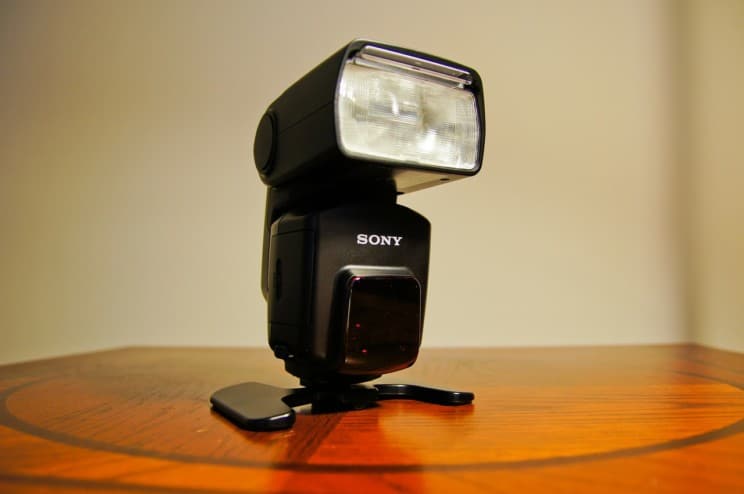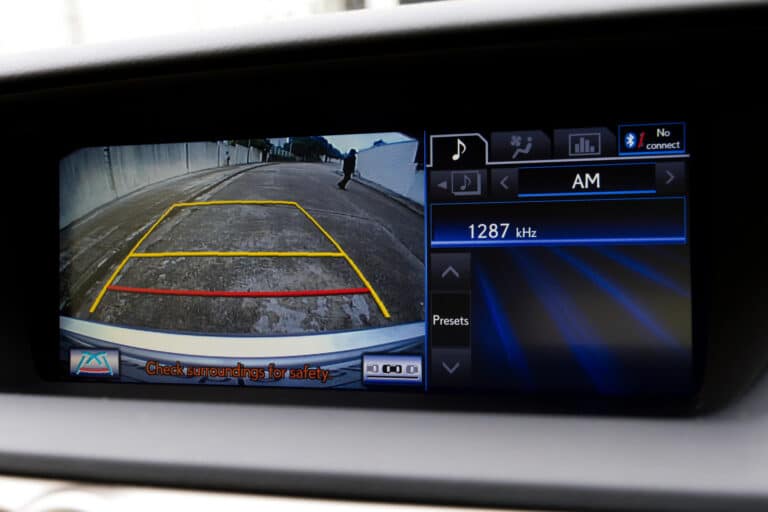How Much HD Video Can A 128GB Card Hold?
Have you ever wondered how much HD video content can fit on a 128GB memory card? Many factors go into answering this question, so I will try to cover them all.
This blog post is for those who want to know the answer to the question, “How much HD video can a 128GB card hold?”
How Much HD Video Can A 128GB Card Hold?
A 128GB card can hold up to 24 hours of 1080p video at a data rate of 8.85MB/s, or up to 48 hours of 720p video at a data rate of 4.42MB/s.
The file format and codec affect the data rate of the video, therefore affecting how long it will take for a 128GB card to be full.
How Many Hours of HD Video Is 128GB?
You may store up to 24 hours of HD video on a 128GB memory card. However, each video and codec duration will affect how much footage can be stored on a card.

- Offload speeds of up to 200MB/s
- Write speed up to 90MB/s
- Perfect for 4K UHD video and burst mode photography
- UHS Speed Class 3 (U3) and Video Speed Class 30 (V30)

- Up to 180MB/s read speed
- Write speeds up to 90MB/s
- Perfect for 4K UHD video and burst mode photography
- UHS Speed Class 3 (U3) and Video Speed Class 30 (V30)
For example, if you record a two-hour movie in 1080p HD at 60 frames per second, it would use up to 12GB of storage space, meaning you would need ten cards to hold just two hours of footage.
You might be able to squeeze more time into the same amount of memory if your videos are encoded in H.264 rather than MPEG-II because H.264 is a more efficient codec.
Alternatively, if you record in a lower resolution or lower frame rate, you will store more footage on the same card.
What is HD?

The term HD is an acronym of high definition. The video resolution of high definition is higher than standard-definition video.
HD resolutions are typically 1280×720 or 1920×1080, while standard definition resolutions are typically 640×480 or 800×600.
1080p videos are typically the largest files because they have a high bit rate and require lots of pixels to be encoded. This means that 1080p H.264 videos can take up more than a gigabyte per minute.
720p videos are smaller in file size, but they still look great when played back on an HDTV.
Is HD Video Better?
There are benefits and downsides to using HD resolutions for videos.
The most apparent benefit of HD resolution is that it provides a much richer viewing experience with crisper details and better video quality.
Still, the downsides include larger file sizes and higher bandwidth requirements.
Benefits to Using Hd Resolutions for Videos
There are many benefits to using HD resolutions for videos. Some of the most notable benefits include:
- Higher resolution provides a sharper and more detailed image.
- More pixels mean that video can be displayed on larger screens without losing quality.
- Many devices, such as smart TVs, support HD video playback.
- HD video can be encoded with more compression than standard definition video, which results in a higher quality image without any noticeable loss in quality.
Disadvantages to Using Hd Resolutions for Videos
While there are many benefits to using HD resolutions for videos, there are also some disadvantages. Some of the most notable disadvantages include:
- Many devices cannot play HD video. For example, standard definition TVs do not support HD video playback. Standard definition DVD players also don’t support HD video formats.
- Standard definition videos can be encoded with more compression than HD videos, resulting in a higher quality image without any noticeable loss in quality.
- HD video files are typically larger than standard-definition video files, which can cause compatibility issues when transferring videos between devices.
- HD video takes up more storage space than standard-definition video.
- It can be more expensive to produce HD videos than standard definition videos.
- HD video can be more taxing on a device’s hardware than standard-definition video. This can cause a decrease in battery life or performance.
Why Use a 128GB Card for HD Video Storage?

If you plan on taking a lot of videos with your DSLR camera, then having a 128GB memory card will allow you to store more HD video files.
Having lots of storage room is great for vacations and family gatherings that might require hours of video recording time.
If most people in your household use smartphones or action cameras (GoPro), then a 128GB memory card is going to be overkill.
A 128GB card is a good choice if you want to store a lot of HD video content, but it might not be the best option for everyone.
If you are only going to be making short videos with your DSLR camera, then a 16 or 32GB card will probably be enough.
Factors Affecting Size of a Video
Codec
The codec is an algorithm that compresses the video data, affecting the file size. Some codecs are more efficient than others, resulting in smaller file sizes.
Audio Codec
Like the video codecs, audio codecs can also be more or less efficient. A more efficient codec will result in smaller file sizes, but an inefficient one might lead to larger files.
Frame Rate
The frame rate impacts the file size since it determines how many images are captured per second. A higher frame rate means more images are captured, resulting in a larger file size.
For example, a video recorded at 60 frames per second would be much larger than one recorded at 30 frames per second.
All HD video will double in bit rate when the frame rate (the number of frames per second):
- at 2.7k exceeds 30
- at 1080p exceeds 60
Video Resolution

The resolution determines the quality of the video files, affecting their size because higher resolutions contain finer details.
A 1080p HDTV has a resolution of 1920×1080 pixels, over two million pixels – this results in large file sizes.
The average 1080p HD video clip is about two gigabytes in size so that you can fit up to sixty of them on a 128GB memory card.
If you have videos larger than two gigabytes, you will only store less of them.
Aspect Ratio
It’s the proportion between the width and height of a video, and it affects the file size because a wider aspect ratio results in larger files.
For example, an aspect ratio of 16:09 is wider than that of 04:03, so videos with a 16:09 aspect ratio will be larger in file size.
Frame Size
The frame size is the physical size of each video frame, and it affects the file size because a larger frame size means more data is captured.
Compression Level
The compression level determines how much data is lost during the compression process, affecting the file size.
Bit Rate
The bit rate is the amount of data transmitted per second, and it affects the file size because a higher bit rate means more data is used.
Bit Rate Mode
The bit rate mode determines how the data encodes, affecting the file size because variable modes are more efficient. Constant bit-rates result in larger files than variable modes.
An excellent example of a constant-bit-rate video format would be MPEG-AVC/H.264, used by Blu-ray discs.
GOP Structure
The Group of Pictures (GOP) structure determines how often the video frames are encoded, and it affects file size because a longer GOP results in larger files.
For example, a GOP structure of 12 results in more frames being encoded than one with six.
Duration

The longer the duration of a video, the larger its file size will be. This is because more data is captured over a more extended period.
For example, six two-minute videos would have approximately twelve times as much footage as one three-minute video.
If all of your videos are two minutes long, then you will be able to store up to sixty-four of them on a 128GB memory card.
However, if some of your videos are ten minutes long, you will only be able to store six of them.
Sample Rate
The sample rate is the number of samples per second, and it affects file size because a higher sample rate means more data needs to be encoded for each frame.
File Format/Container
Different file formats have different compression levels, which affects the size of the resulting files.
The file format determines how the video data is stored, and it affects the size of the resulting files. Some formats are more efficient than others, resulting in smaller file sizes.
For example, the H.264 codec is more efficient than the MPEG-II codec, so files encoded with H.264 will be smaller than those encoded with MPEG-II.
An MKV container is more efficient than an AVI container so that MKV files will be smaller in size than AVI files.
Some formats, like MPEG-TS, take up more storage space than others, like MPEG-AVC.
If you have a lot of videos in a less compressed format, you will fit less of them on a 128GB memory card.
Now that you understand some of the factors that affect HD video file size let’s look at how much footage you can store on a 128GB memory card.
128GB is enough storage for approximately:
- 64 ten minute 720p videos or
- 32 five minute 1080p videos or
- Sixteen two and a half minute 1080p videos.

- Offload speeds of up to 200MB/s
- Write speed up to 90MB/s
- Perfect for 4K UHD video and burst mode photography
- UHS Speed Class 3 (U3) and Video Speed Class 30 (V30)

- Up to 180MB/s read speed
- Write speeds up to 90MB/s
- Perfect for 4K UHD video and burst mode photography
- UHS Speed Class 3 (U3) and Video Speed Class 30 (V30)
Final Thoughts
The amount of HD video stored on a 128GB card depends on various factors, including the resolution of the videos, the codecs used, and the file format. However, you can generally expect to store between 16 and 24 hours of HD footage on a card this size.
Remember that these numbers are estimates, and your exact results will vary depending on the video files you’re working with.







